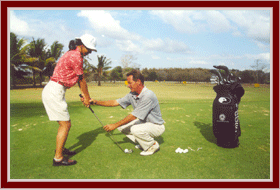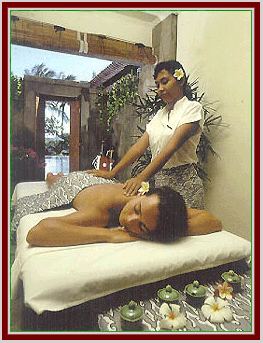|
|
 |
|||||||||||||
|
Bali Golf and Country Club
|
||||||||||||||
 |
||||||||||||||
Fix an Over-the-Top Golf Swing: Causes and CorrectionsIf you're struggling with an over-the-top golf swing, it's likely costing you distance and accuracy on the course. This common problem often stems from issues you might not expect, like tight hips or a rushed downswing sequence. However, with a few targeted changes and the right drills, you can reshape your swing for more consistent results. Let's explore the real causes—and what you can start doing differently to see steady improvement. Understanding Why Over-the-Top Swings HappenEvery golfer's swing is distinct; however, over-the-top swings frequently result from bodily compensations when movement is restricted. Inadequate weight transfer during the backswing can lead to a reverse pivot, which positions the upper body over the ball and prompts an over-the-top motion in the downswing. Factors such as improper hip tilt at setup or a flat takeaway can misalign the clubhead early, exacerbating this tendency. Additionally, an open clubface at the apex of the swing, often influenced by a weak grip, can compound the issue and necessitate further compensatory arm movements. Understanding these mechanics can assist golfers in addressing and correcting over-the-top swings. Common Mobility Issues Behind Over-the-Top SwingsA limited range of motion in the hips or shoulders can contribute to an over-the-top golf swing, which may hinder a golfer's ability to maintain control and achieve consistent ball flight. Mobility restrictions, particularly in the lead hip and trail shoulder, can impede effective horizontal rotation during the downswing phase of the swing. Specific areas of concern include tightness in the Tensor Fasciae Latae (TFL) of the lead hip and restrictions in the infraspinatus rotator cuff muscles in the trail shoulder. These conditions can lead to compensatory arm movements, which often result in the club moving over the top of the intended swing path. To mitigate these mobility issues, regular application of hip rotation drills using a foam roller and targeted soft tissue work may be beneficial, potentially leading to a more efficient swing path. Importance of Lead Hip FlexibilityLead hip flexibility plays a crucial role in the mechanics of a golf swing. Tightness in the lead hip can lead to undesirable arm movements, which may cause an over-the-top swing path. When the lead hip lacks the necessary flexibility, it restricts the downswing, making it difficult to maintain the club on an optimal swing plane. One of the key muscles involved in this issue is the Tensor Fasciae Latae (TFL), which, when tight, limits lead hip rotation and can contribute to inconsistency in shot execution. By improving lead hip flexibility, golfers can promote smoother rotation of the hips, which in turn enhances overall swing mechanics. This improvement can facilitate a shallower angle of attack, a significant factor for achieving a more consistent and controlled golf swing. Therefore, prioritizing lead hip flexibility may lead to better performance on the course. Lead Hip Mobility and Soft Tissue DrillsMobility plays an important role in the mechanics of a golf swing, particularly in the downswing phase. Improved lead hip mobility can mitigate the risk of compensatory movements, such as an over-the-top swing, which can detract from performance. To enhance hip mobility, one effective approach is to address soft tissue restrictions. Applying sustained pressure to the Tensor Fasciae Latae (TFL) muscle using a golf club can help release tension in this area, which in turn may contribute to improved hip function. Following this soft tissue work, dynamic stretching exercises, such as the Foam Roller Hip Rotation Drill, can be beneficial. This particular drill involves hovering the lead foot and rotating outward, which promotes both strength and flexibility in the hip region. Engaging in these routines for approximately 10-15 minutes can lead to measurable improvements in swing mechanics and overall fluidity. Regular practice can potentially enhance performance by facilitating a more effective range of motion during the swing. Trail Shoulder and Rotator Cuff MobilityLimited mobility in the trail shoulder and rotator cuff can significantly impact a golfer's swing mechanics, particularly during the downswing. When tightness is present, especially in the infraspinatus muscle of the rotator cuff, it restricts the necessary range of motion, potentially resulting in an over-the-top swing path. This tightness often leads to compensatory movements as the body attempts to maintain effective swing dynamics. To address these limitations, the use of a lacrosse ball for self-myofascial release can be beneficial in targeting and alleviating trigger points in the shoulder area. This technique may facilitate improvements in trail shoulder mobility and contribute to a more efficient swinging motion. Following soft tissue work, it's advisable to incorporate dynamic shoulder exercises to retain the enhanced flexibility gained during the release process. Moreover, building a routine that includes shoulder mobility drills in a warm-up can serve as a preventive measure against tightness. This proactive approach not only promotes optimal shoulder function but also supports better club control, which can reduce the likelihood of developing over-the-top swings. Regular practice of these principles can enhance overall swing performance and help mitigate the risk of injuries related to shoulder tightness. Key Drills to Improve Swing PathTo improve swing path efficiency, it's essential to focus on specific drills that target the underlying causes of an over-the-top motion. One effective drill is the Hands-to-Pocket Drill, which involves lowering your hands toward your trail hip pocket during the downswing. This technique encourages an inside-out swing path that can lead to better ball contact. Additionally, enhancing hip rotation plays a significant role in swing path improvement. Flaring the trail foot by 20-25° at setup can facilitate a more effective lower body lead during the swing. This adjustment allows for increased hip rotation, which is crucial for generating power and stability. Incorporating the Foam Roller Hip Rotation Drill can further enhance mobility, facilitating a smoother transition during the swing. This drill aids in developing the necessary range of motion in the hips, contributing to an improved swing path. Maintaining an arm-to-torso connection is also important. Placing a glove or tee under the armpits can help reinforce this connection, ensuring that the arms and body work in harmony throughout the swing. Finally, practicing a 3:1 swing tempo can assist in establishing consistency and control in the swing. By focusing on this rhythm, golfers can solidify their swing improvements, leading to a more effective and efficient golf swing. Mistakes That Cause Over-the-Top MovementsIdentifying common mistakes that contribute to an over-the-top swing is important for improving technique in golf. One significant factor is the tightness in the lead hip or trail shoulder, which can restrict movement. This restriction may compel the upper body to initiate the downswing prematurely, leading to an over-the-top motion. Additionally, if a golfer maintains weight on the lead foot during the backswing—a condition recognized as a reverse pivot—it can impede a proper transition into the downswing. This misbalance may hinder overall swing mechanics. Another issue is a flat takeaway, which can limit shoulder rotation and constrain the arms, ultimately affecting the swing path. Finally, an open clubface resulting from a weak grip can exacerbate over-the-top tendencies, as it alters the club's angle at impact. Addressing these factors can help golfers develop a more effective swing. Integrating Drills Into Your Golf PracticeFixing an over-the-top swing in golf requires time and practice, but integrating targeted drills into your routine can facilitate progress and lead to lasting improvements. A structured practice session should begin with 10–15 minutes of mobility drills, which may include using a golf club to address soft tissue tension in the tensor fasciae latae (TFL) muscle and employing a lacrosse ball to alleviate tightness in shoulder trigger points. These initial steps can help enhance overall mobility, an essential component for an effective golf swing. Following the mobility work, it's advisable to incorporate dynamic drills such as the foam roller hip rotation. This exercise can improve hip mobility, a critical aspect that contributes to a more efficient downswing. By working on these specific movements, golfers can address common mechanical issues and potentially improve their performance on the course. After completing mobility and dynamic drills, practicing the golf swing itself is essential for reinforcing better mechanics. Consistent integration of these drills promotes the development of new muscle memory, which is vital for achieving a more consistent and effective swing over time. Therefore, a systematic approach to practice, focusing on mobility and targeted drills, can yield beneficial results for golfers seeking to improve their swing mechanics. Benefits of Addressing the Root CausesAddressing the root causes of an over-the-top golf swing can lead to improved consistency and reliability in shot performance. By focusing on body mechanics, particularly the mobility of the lead hip and trail shoulder, players can enhance control and power throughout their swing. Correcting these foundational issues can contribute to a more efficient downswing path, which is associated with better ball striking outcomes. Incorporating targeted drills and mobility exercises can help mitigate frustrations associated with inconsistent swings, thereby potentially increasing overall enjoyment of the game. Additionally, adjustments to grip and weight transfer can further support enhancements in balance, distance, and overall golf performance. This methodical approach to improving swing mechanics is supported by both empirical evidence and practical experience in the field of golf instruction. ConclusionFixing an over-the-top golf swing starts with understanding its root causes—mobility, sequencing, and technique. By improving lead hip flexibility, shoulder mobility, and practicing targeted drills like the Hands-to-Pocket Drill, you’ll gradually build a smoother, more consistent swing path. Remember, real progress comes with patience and repetition. Integrate these corrections into your regular practice, and you’ll not only eliminate that over-the-top move but also unlock more power and accuracy in your game. |
||||||||||||||
  |
||||||||||||||
 |
||||||||||||||
 |
||||||||||||||
| Facts and Facilities | ||||||||||||||
 |
 |
|||||||||||||
 |
 |
|||||||||||||
 |
||||||||||||||
| IDEAL FOR BUSINESS MEETINGS AND CORPORATE RETREATS | ||||||||||||||
 |
||||||||||||||
| BALE BAR AND BARONG RESTAURANT | ||||||||||||||
 |
||||||||||||||
| CLUBHOUSE BANQUETS AND GROUP EVENTS | ||||||||||||||
 |
||||||||||||||
| [ Home ] [ Golf Rates ] [ Hole 1 - 9 ] [ Hole 10 - 18 ] [ ] [ ] |
||||||||||||||